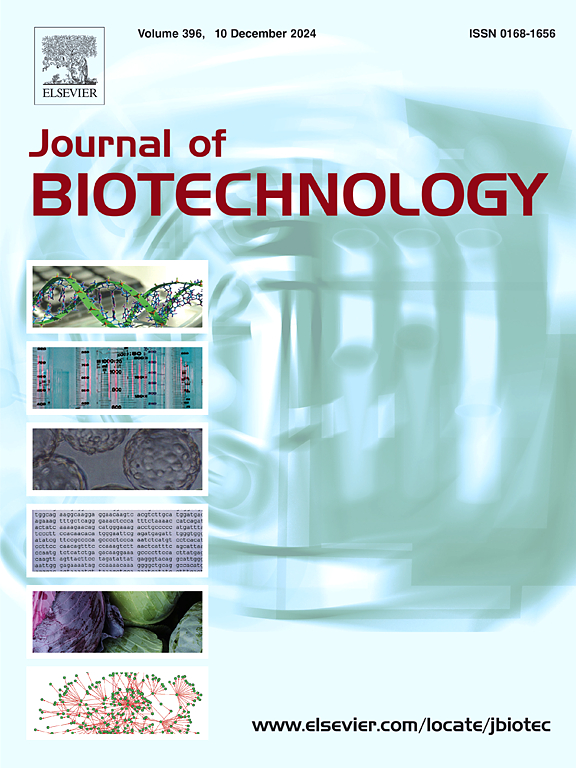Synergistic interaction of AaMYC2 and AaMYC2-LIKE enhances artemisinin production in Artemisia annua L.
IF 4.1
2区 生物学
Q2 BIOTECHNOLOGY & APPLIED MICROBIOLOGY
引用次数: 0
Abstract
Artemisinin-based combination therapies recommended by WHO marks Artemisia annua as the only natural source of artemisinin fighting deadly disease, Malaria. In this study, we isolated two transcription factors, AaMYC2 and AaMYC2-LIKE, from A. annua and investigated their role in regulating artemisinin biosynthetic pathway. Our findings depict that both AaMYC2 and AaMYC2-LIKE are transcriptionally active and, when co-transformed in yeast cells, significantly enhance β-galactosidase activity in transactivation assays as compared to their individual transformations. Furthermore, Yeast two-hybrid (Y2H) and Biomolecular fluorescence complementation assays revealed AaMYC2 physically interacts with AaMYC2-LIKE in yeast cells and in the nucleus of onion epidermal cells respectively. Generation of transient transgenic over expression and co-expression lines of AaMYC2 and AaMYC2-LIKE resulted in elevated expression of artemisinin biosynthetic genes and trichome development genes in co-expression lines as compared to individual transgenic lines and wildtype. Importantly, the glandular trichome density and artemisinin content was also significantly higher in co-transformed transgenic lines compared to individual AaMYC2 and AMYC2-LIKE transgenic lines. Conversely, artemisinin content was markedly reduced in AaMYC2-RNAi lines, underscoring the critical role of functional AaMYC2 in synergistic regulation with AaMYC2-LIKE. Altogether the above studies provide valuable insights into the regulatory networks of MYC type bHLH transcription factors in controlling economically and medically important pathway in A. annua.
求助全文
约1分钟内获得全文
求助全文
来源期刊

Journal of biotechnology
工程技术-生物工程与应用微生物
CiteScore
8.90
自引率
2.40%
发文量
190
审稿时长
45 days
期刊介绍:
The Journal of Biotechnology has an open access mirror journal, the Journal of Biotechnology: X, sharing the same aims and scope, editorial team, submission system and rigorous peer review.
The Journal provides a medium for the rapid publication of both full-length articles and short communications on novel and innovative aspects of biotechnology. The Journal will accept papers ranging from genetic or molecular biological positions to those covering biochemical, chemical or bioprocess engineering aspects as well as computer application of new software concepts, provided that in each case the material is directly relevant to biotechnological systems. Papers presenting information of a multidisciplinary nature that would not be suitable for publication in a journal devoted to a single discipline, are particularly welcome.
 求助内容:
求助内容: 应助结果提醒方式:
应助结果提醒方式:


